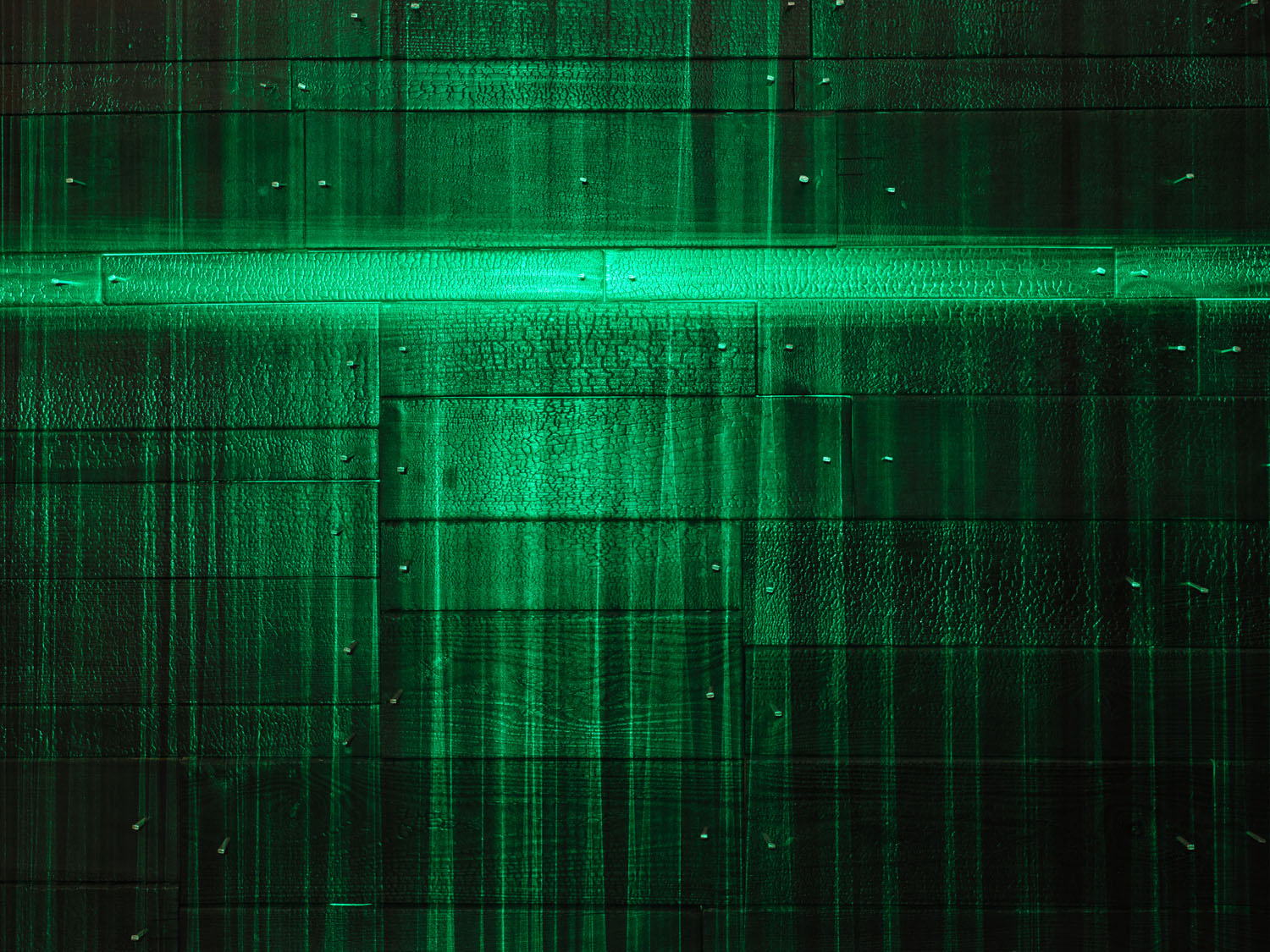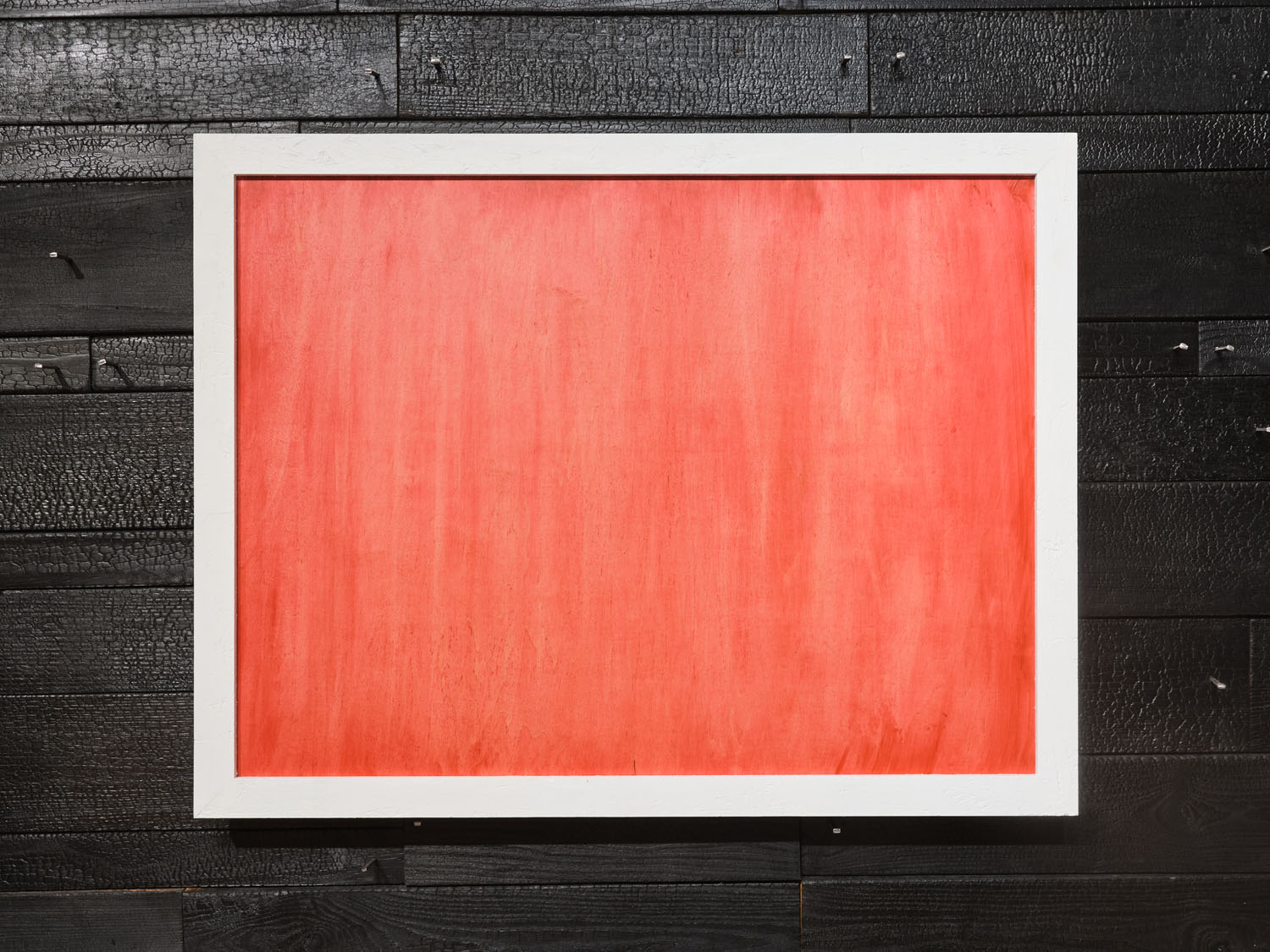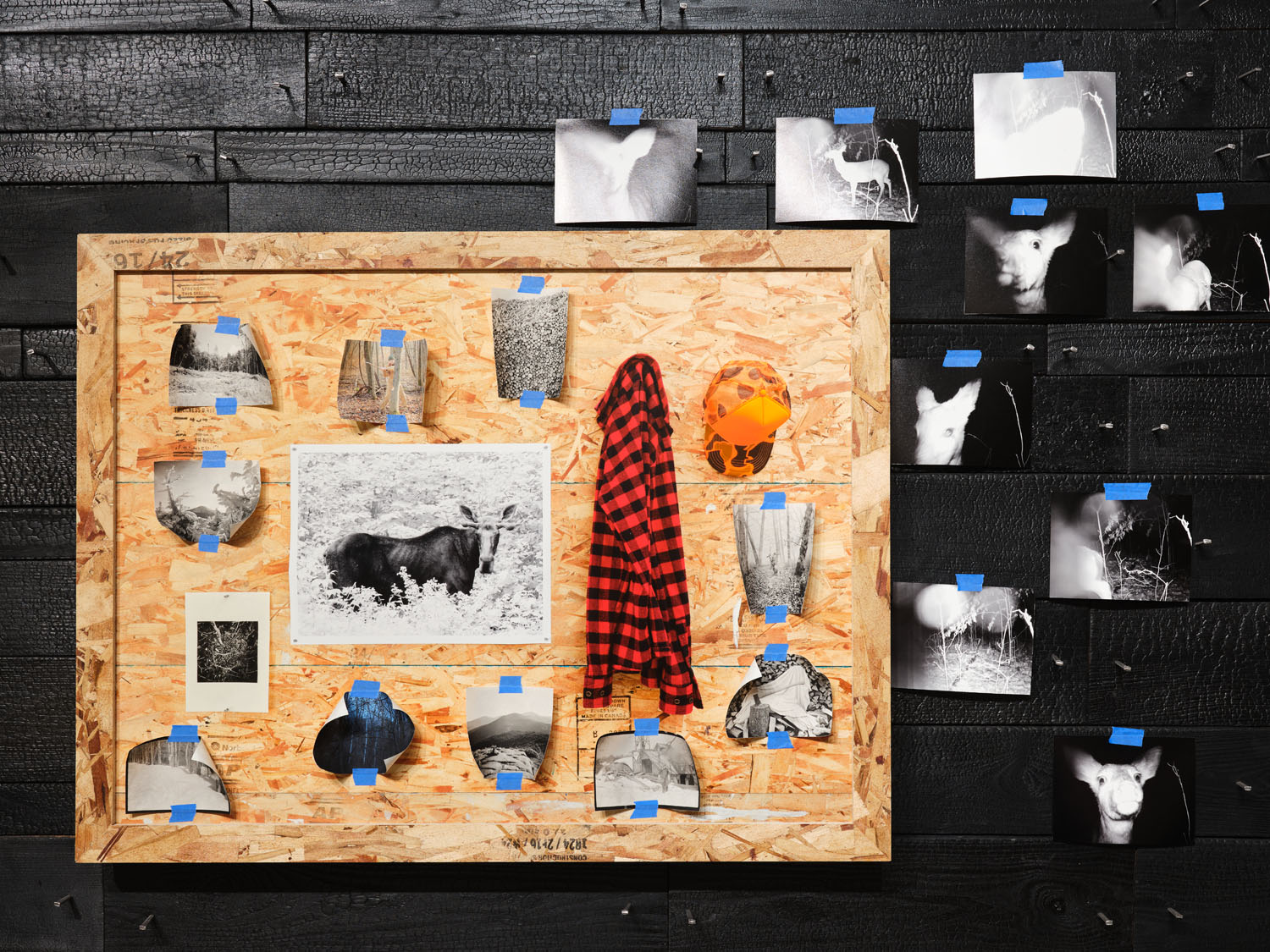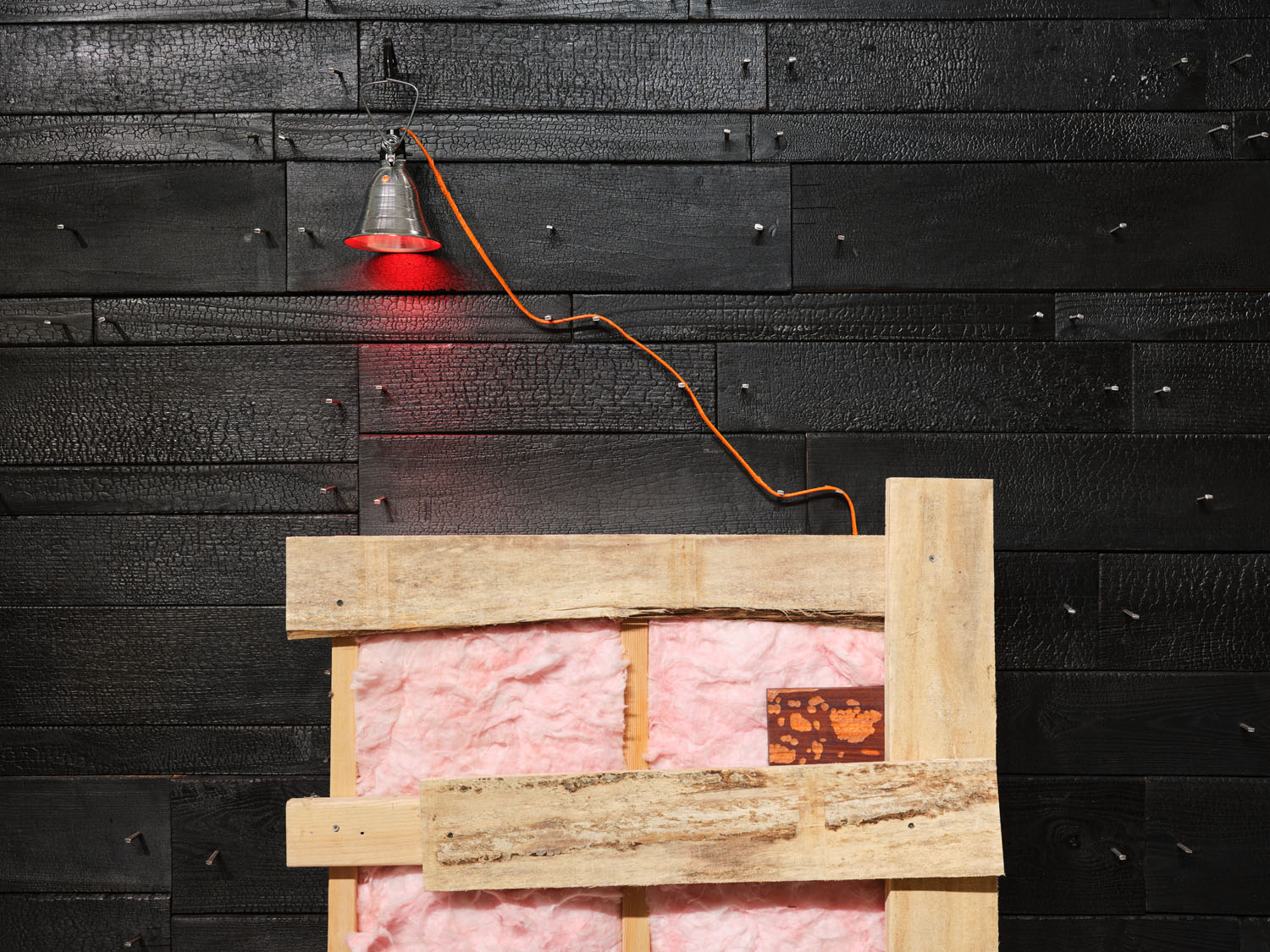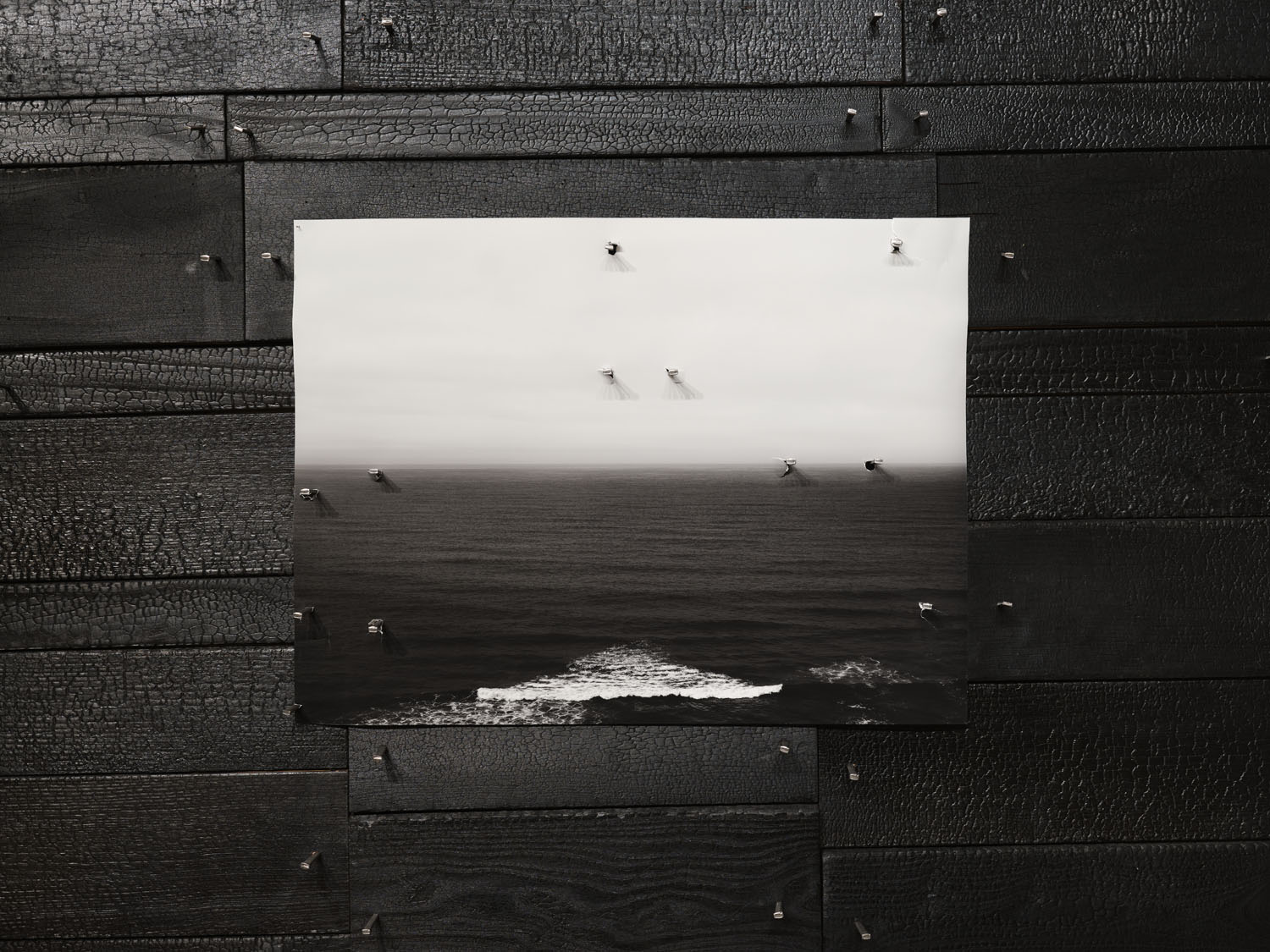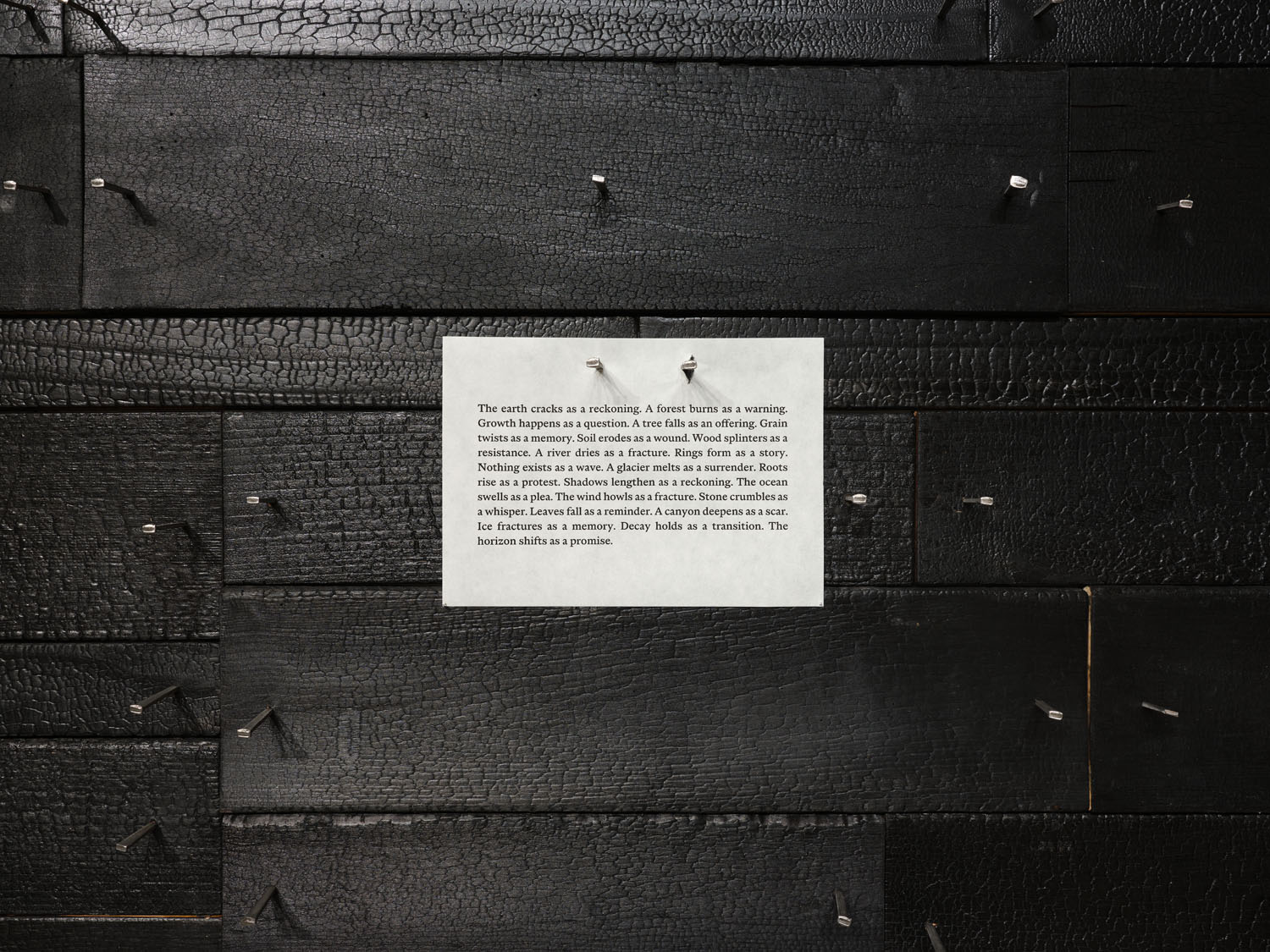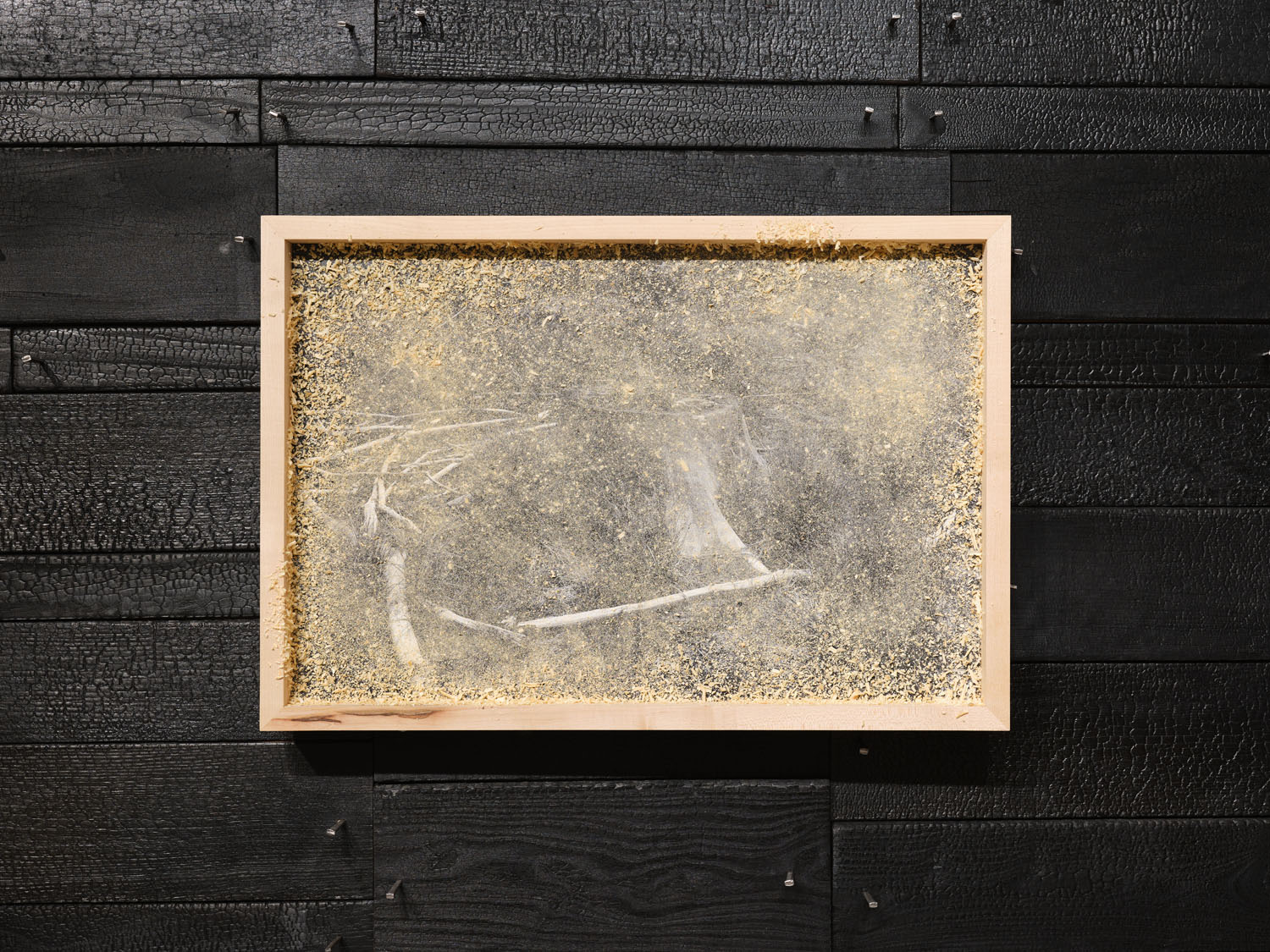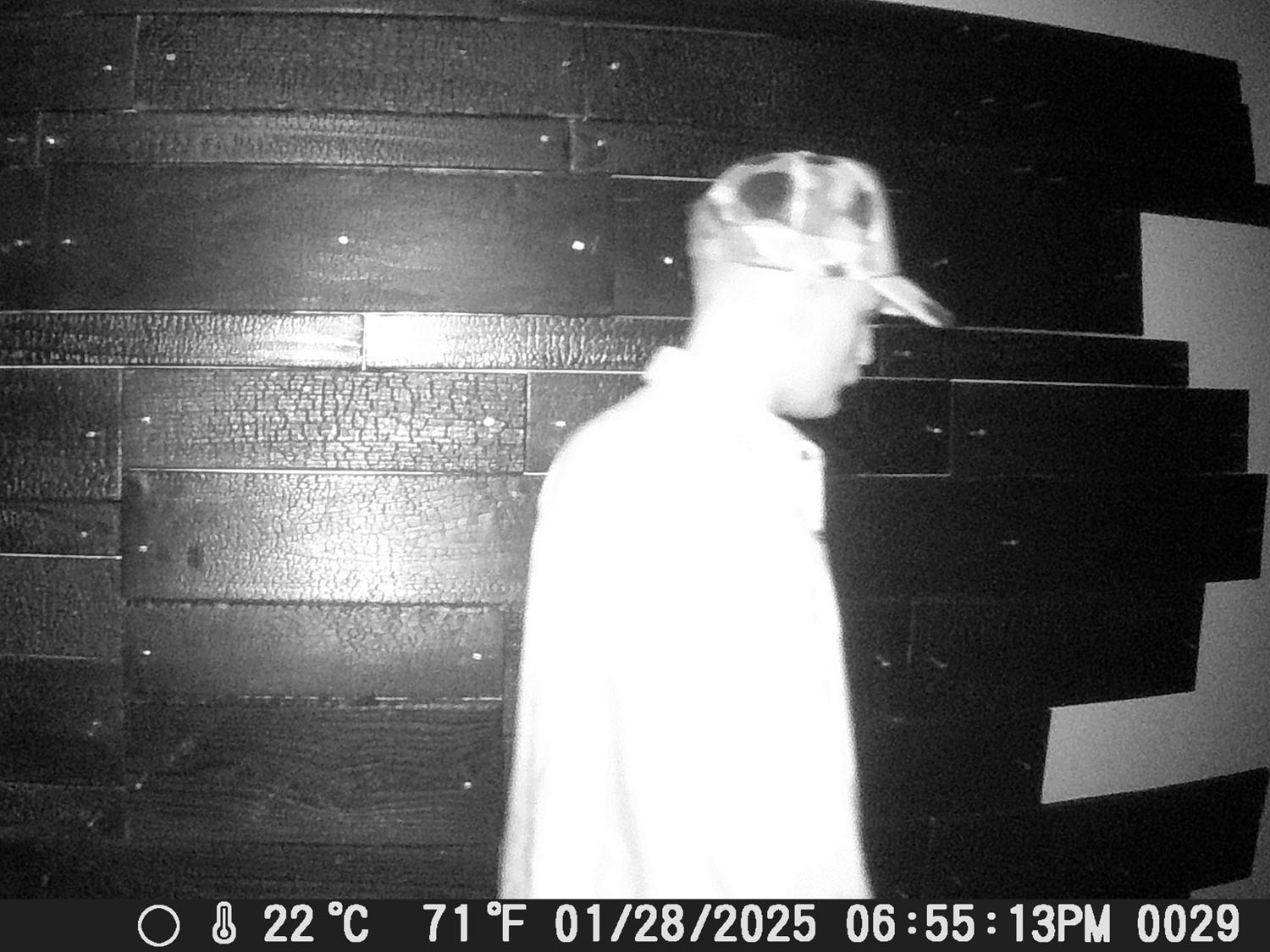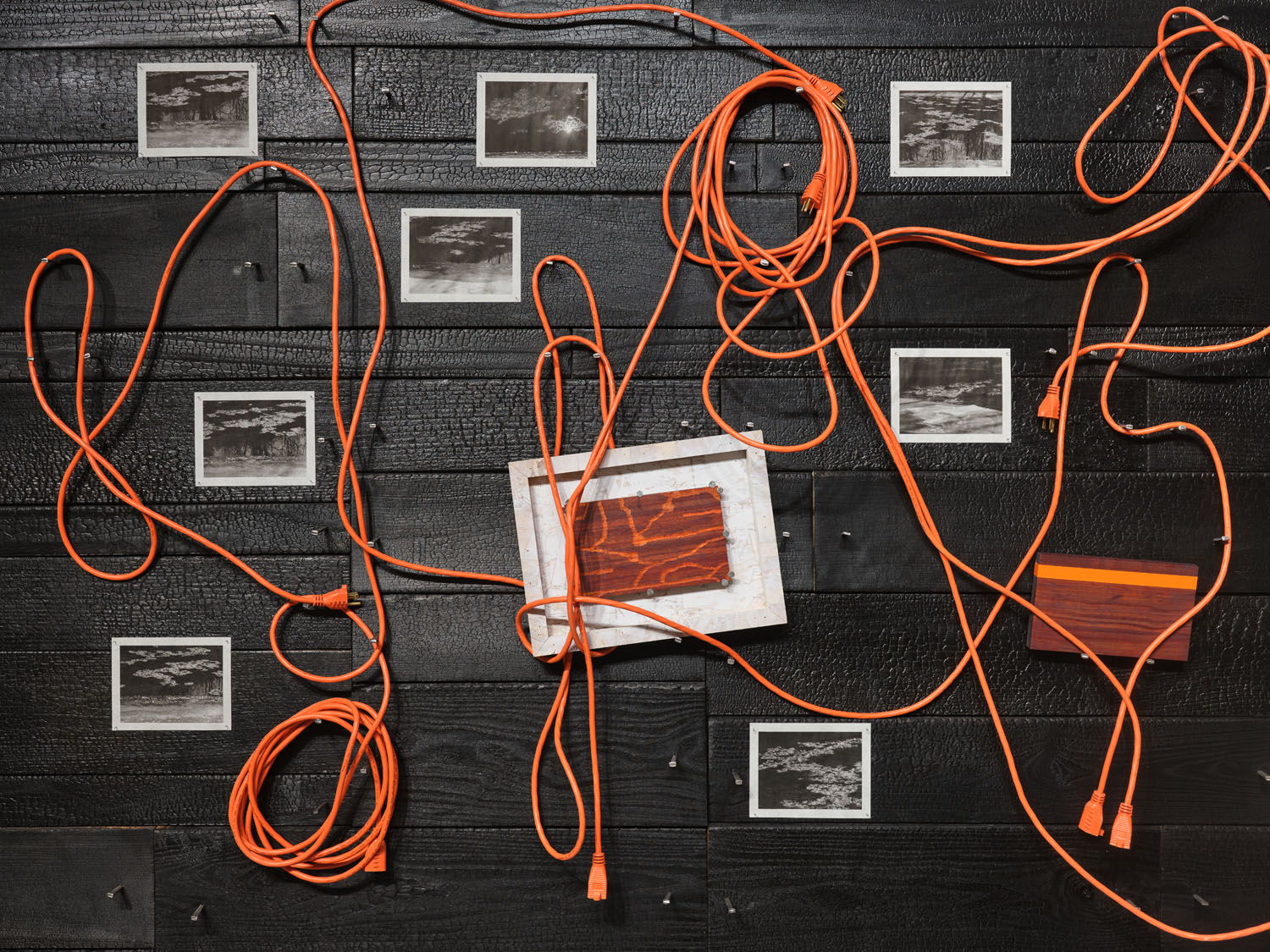Adam DeSorbo is an artist from upstate New York currently living in Oregon with his rescue dog, Rex. He holds a B.S. in Environmental Studies from SUNY College of Environmental Science and Forestry and is an MFA candidate at the University of Oregon. In addition to his formal education, he was taught to build by his dad in rural New York, learned to use an axe through backcountry trail work in New Hampshire and Maine, became overwhelmed with the abundance of the earth in the mountains of the east, and is currently wading in the complications of human ecology through studio practice and a life spent outside. It is his belief that work rooted in experience and process is where the self and the earth are woven with grief, magic, and everything in-between.
Building Blocks of an Altered Earth embraces the paradoxical nature of archiving a world in perpetual flux. At first glance, the meticulously arranged wooden grid—composed of four rows by six columns—suggests the cataloging impulses of a natural historian or an archivist, each compartment acting as its own repository of images, objects, and fragments. Yet, on closer inspection, a tension emerges between the order implied by the grid and the entropy suggested by materials like charred wood and photographs in various stages of fading or decay. These elements point to both the destructive forces of fire and the inexorable passage of time, underscoring the impossibility of truly halting the processes of transformation.
Photography acts as a central role, functioning as a tool for both documentation and remembrance. Repeated imagery, grids of small prints, and trail camera photographs capture fleeting moments— a deer in motion, a solitary figure, or a landscape’s ephemerality. These temporal imprints contrast sharply with the evolving nature of the objects around them, highlighting the ways in which photographic images both preserve and distort memory. The systematic repetition of photographs, reminiscent of a contact sheet, alludes to the ritualistic character of archiving: each repeated frame is another attempt to hold onto a moment before it dissolves.
Scattered throughout the compartments are handwritten notes, pinned scraps, and collaged fragments that are both personal and provisional. They function as reminders that every act of collecting and archiving is, at heart, selective and interpretive. The presence of color-blocked panels—vibrant fields of orange, green, or red—punctuates the otherwise subdued palette. The color fields can be read as acts of intervention, symbols of our very human desire to mark and shape the world, even as we attempt to record it.
Ultimately, Building Blocks of an Altered Earth refuses to resolve the tension between preservation and loss, offering instead a dynamic, open-ended constellation of materials and gestures. By placing ephemeral, naturally decaying objects alongside repeated attempts at photographic capture, the piece makes visible our contradictory impulses: we attempt to fix time, yet we are forever confronted by its transience. In this way, the work suggests that the true value of an archive lies not in its power to definitively preserve, but in its capacity to engage us in an ongoing dialogue with the impermanent nature of our experiences.
